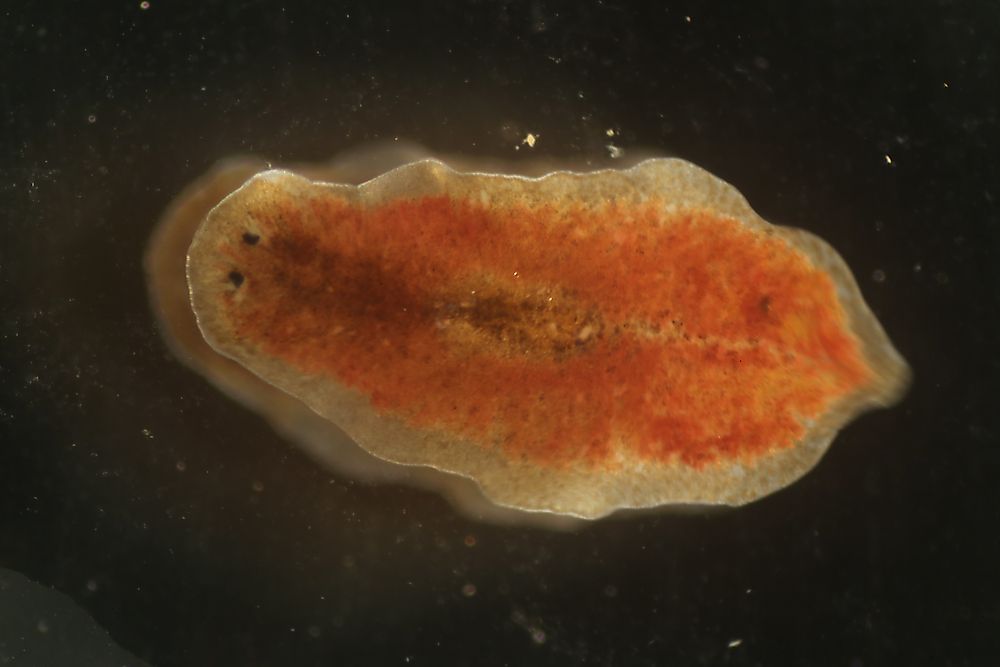What Are Flatworms?

Flatworms are known by several other names including flat worms and platyhelminths. The worms are unsegmented and soft-bodied invertebrates without body cavities and specialized circulatory and respiratory organs. Thus, oxygen and nutrients pass through the body by a process of diffusion, hence the flat body. Most of the known species of flatworms are parasitic and some may cause significant harm to both humans and livestock. One of the most devastating diseases in human, caused by the parasite is Schistosomiasis, which is a major cause of acquired epilepsy worldwide. Flatworms are common in lightly cooked food and foods imported from high-risk areas.
Features Of Flatworms
Flatworms are bilaterally symmetrical and have three major cell layers, namely the endoderm, mesoderm, and ectoderm. They do not have an internal cavity, thus, they are described as acoelomates. Flatworms have flat, soft, and unsegmented bodies and lack circulatory and respiratory organs. Most of the species also do not have anus with the undigested material regurgitated through the mouth. However, some species, especially the long ones, have an anus. The nervous system in all species is concentrated at the head end
Flatworm: Major Subgroups
Traditionally, flatworms have been subdivided into four major subgroups namely Turbellaria, Trematoda, Monogenea, and Cestoda. The traditional classification of a flatworm is still in use almost everywhere except in scientific articles.
Turbellaria
About 4,500 species of flatworm fall in Turbellaria subgroup. The species in this group are free-living and their lengths range from 1-600 mm. most of the species are scavengers and predators and are mainly nocturnal, living in shades and leaf litters. However, some have a symbiotic relationship with some other animals including some parasites. Most Turbellarians are black, brown, or gray in color while larger ones may have brighter colors. Most of them are hermaphrodites and fertilize eggs internally through copulation while some species may mate by penis fencing.
Trematoda
Trematoda have cavities in their holdfast which resembles suckers. Their skin has a layer of cells sharing a single external membrane. Trematoda is further subdivided into two groups; Digenea and Aspidogastrea. Digenea is often referred to as flukes and often posses flat rhomboid shapes. There over 10,000 species of Digenea. Adult species possess two holdfasts, large suckers, and a ring around the mouth. An adult digenean measures 0.2-6 mm long. Aspidogastrean has either a single divided sucker or a row of suckers.
Monogenea
There are over 1,000 species of monogenea with most of the species being external parasites, requiring a host species. Adults possess large attachment organs at the rear with the organs having suckers, hooks, and clamps. Monogenea has flattened bodies. Some of the species in this group secrete enzymes from the pharynx that digests the host’s skin, allowing them to suck blood.
Cestoda
Cestoda is often referred to as tapeworms because of their flat, long, and slender bodies. About 3,400 species of flatworms are in this group. Adults are internal parasites. Cestodes do not have mouths or guts and only absorb nutrients through the syncytial skin. They also produce chemicals that protect them from the attacks by the immune system of the host.
Flatworms And Humans
Flatworms can either benefit or destroy humans. As parasites, tapeworms and flukes are known to cause severe diseases in human and livestock. In tropical countries, Schistosomiasis is one of the most devastating diseases. Some of the species are pests; they prey on earthworm while some may damage plant roots. However, some of the species have been beneficial in controlling the giant African snail in Hawaii.











